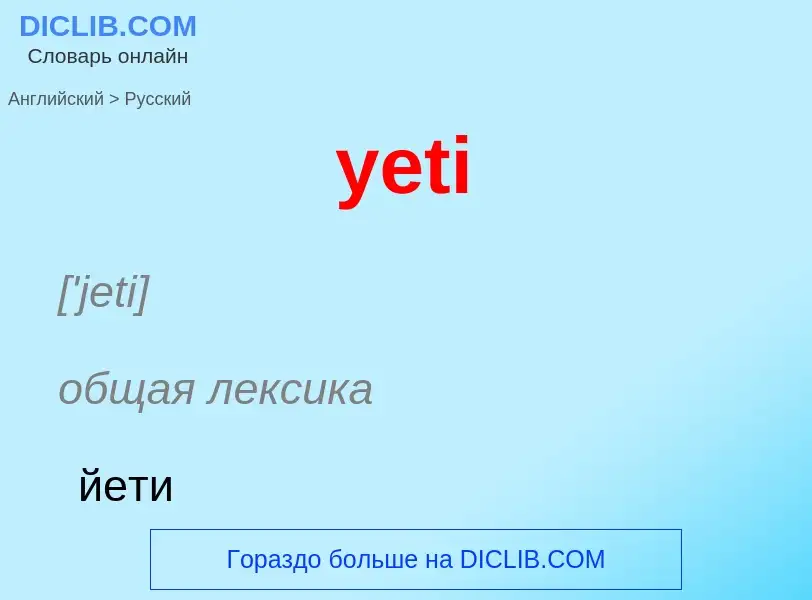Translation and analysis of words by ChatGPT artificial intelligence
On this page you can get a detailed analysis of a word or phrase, produced by the best artificial intelligence technology to date:
- how the word is used
- frequency of use
- it is used more often in oral or written speech
- word translation options
- usage examples (several phrases with translation)
- etymology
yeti - translation to russian
['jeti]
общая лексика
йети
"снежный человек"
существительное
общая лексика
йети
«снежный человек»
['jeti]
существительное
общая лексика
йети
«снежный человек»
[əbɔminəb(ə)l'snəumæn]
общая лексика
снежный человек
йети
Definition
Wikipedia

The Yeti () is an ape-like creature purported to inhabit the Himalayan mountain range in Asia. In western popular culture, the creature is commonly referred to as the Abominable Snowman. Many dubious articles have been offered in an attempt to prove the existence of the Yeti, including anecdotal visual sightings, disputed video recordings, photographs, and plaster casts of large footprints. Some of these are speculated or known to be hoaxes.
Folklorists trace the origin of the Yeti to a combination of factors, including Sherpa folklore and misidentified fauna such as bear or yak. The Yeti is commonly compared to Bigfoot of North America, as the two subjects often have similar physical descriptions.





